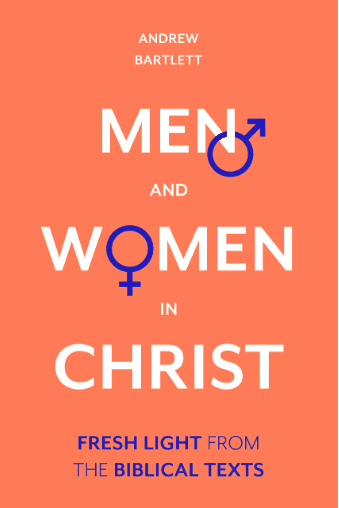 What about those women at Corinth? What about the veils, or was it hair? What about subordination? Andrew Bartlett, in his new book Men and Women in Christ (MWiC), these questions and more with the following major conclusions.
What about those women at Corinth? What about the veils, or was it hair? What about subordination? Andrew Bartlett, in his new book Men and Women in Christ (MWiC), these questions and more with the following major conclusions.
(Before I say anything more, it’s a pity Bartlett does not interact with the fine work of Lucy Peppiatt, who herself shows that the rhetoric doesn’t work until we see quotations by Paul of his opponents in 1 Cor 11. Thus, it’s not all Paul in these verses.)
1. First Corinthians 11:3 is a framework statement which acts as a heading to Paul’s remarks about praying and prophesying. It undergirds his reasoning.
NIV for 11:3: “But I want you to realize that the head of every man is Christ, and the head of the woman is man, and the head of Christ is God.”
He responds to the peculiar American complementarian pet appeal to the Trinity to sanction their theories of female subordination and hierarchy and patriarchalism.
2. Paul’s meaning cannot be safely or convincingly settled by appeal to fine nuances of the doctrine of the Trinity.
3. Word studies show that ‘authority over’ and ‘source’ are possible metaphorical of kephale (head) in verse 3. Usage elsewhere cannot determine Paul’s intended meaning in this verse. This must be sought by examining the context.
4. The hierarchical interpretation which sees Paul’s concern as being about men’s authority over women cannot be right, because it conflicts with the text in eight respects. Of particular importance, the hierarchical interpretation makes it necessary to disregard the function of Paul’s framework statement, to mistranslate verse 10 and to accept that Paul wrote verse 11 the wrong way around.
Not veils, but hair. It was about the embodied message about hairstyles.
5. In the relevant cultural context, women’s hair was regularly on display rather than hidden by a veil (compare 1 Tim. 2:9; 1 Pet. 3:3). But pagan practices in Corinth encouraged dishonourable sexual behaviour, both heterosexual and homosexual, and this was an issue for the Corinthian church. Men’s long hair, and women’s long hair let down loose instead of fastened up on top of the head, both suggested a willingness to engage in such conduct.
6. There are multiple difficulties in reading the passage as concerned with veils. Paul is writing about how hair is worn, not about the veiling of women. Properly translated, verses 2-16 are about hairstyles throughout, not about veils.
7. The NIV is correct to translate aner and gune as respectively ‘man’ and ‘woman’ throughout the passage, and not as ‘husband’ and ‘wife’.
Kephale/head is about source.
8. Once we accept that Paul’s theological motif in i Corinthians 11:3 is sources, and that his subject matter is hairstyles worn by those who prophesy or pray aloud during assembled worship, we find that he is making a continuous, logical and connected argument. There are at least ten pointers to the substantial correctness of a sources and hairstyles interpretation of what Paul writes. The objections to a sources interpretation are unpersuasive.
The hair conveyed a message.
9. Paul’s concern is not about hair itself, but about the dishonourable message given by the Corinthians’ hairstyles. Their conduct should honour God’ purposes for men and women as taught in Genesis and should not appear dishonouring and contrary to those purposes. Relevantly, those purposes involve faithful, monogamous, heterosexual marriage. Paul also emphasizes redemption in Christ: though differentiated by their sexuality in creation, in redemption man and woman are united in the Lord. Men and women are interdependent and need each other’s contributions. Prayer and prophecy should be undertaken by men and women in a way that honours God, the source both of creation and of redemption.
10. Paul says nothing in this passage about male authority over women. Nor does he say anything about reserving some governing and teaching roles within the church to men. If notions of male authority over women and restrictions on women’s ministry are to be supported, this needs to be done by reference to other passages of Scripture.











